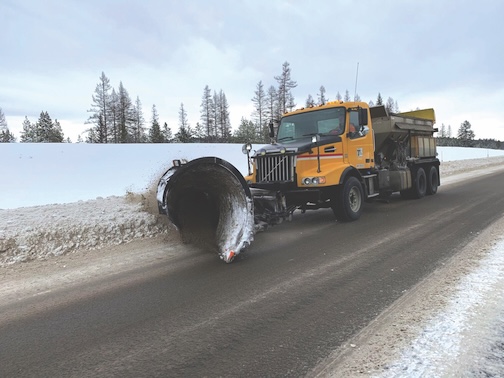Transient wolves possible in Bear Valley
Published 5:00 pm Monday, August 22, 2011
SENECA – It’s inconclusive, said John Stephenson, biologist for U.S. Fish and Wildlife Service.
Trending
Bear Valley resident Bryan Nelson, isn’t so sure.
Responding to Nelson’s request to check out possible wolf scat in Bear Valley last week, Stephenson said he’s uncertain whether any of it came from wolves.
Nelson, who directed him to several locations, said the biologist sounded more positive on the matter.
Trending
“He told me yes, it’s most likely wolves,’ but he doesn’t want to start a wolf hysteria. He said he’s not going to say 100 percent it’s wolves, but a few of them were in the upper size range for being those of coyote,” said Nelson.
Nelson agrees with Stephenson that it’s possible there are transient wolves that move through the area. He and neighbors have heard and occasionally seen them.
In an interview late last week, Stephenson said several of the piles were from coyotes, while a couple of them might have originated from a wolf. There were no tracks around them to assist in identification, he said.
“If they had been from wolves, it should’ve been pretty easy to see the tracks,” said Stephenson. He saw coyote tracks in the case of the smaller scats, he said.
The size of several other scat was in an overlap range, in which they could either be from coyote or wolves.
Normally, those from wolves contain large bone fragments; these did not, he said. The scat ranged in age up to a week old.
Because of cost, Stephenson said his agency doesn’t routinely send scat for DNA testing.
If a few of the droppings were indeed from a wolf, the wolf was just passing through, he said.
“If there are wolves in the area, it becomes clear pretty quickly. There are more reports and signs of their presence.” said Stephenson. “If there are not more reports and signs, then it’s probably more likely that coyotes or dogs were responsible for the droppings. Or, they are from a dispersing wolf or wolves who’ve moved on.”
“There’s no evidence of any pack activity at this time,” he said.
“We know there are some lone wolves moving in the west. It’s certainly possible some of that is occurring in Bear Valley,” said Stephenson, noting the recent occurrence in which one radio-collared animal passed from Wallowa County to the Fossil area in Wheeler County.
The U.S. Fish and Wildlife Service or the Oregon Department of Fish and Wildlife (ODFW) will investigate calls of sightings or signs from wolves.
Wolves west of Highway 395 are federally listed as endangered, and are jointly managed by ODFW and the U.S. Fish and Wildlife Service. In the area east of Highway 395 in Oregon, wolves are federally delisted, and managed by ODFW.
People who sight wolves or find fresh signs such as scat and tracks, should call the Oregon Department of Fish and Wildlife, noted Stephenson. The office in Canyon City can be reached at 541-575-1167.









